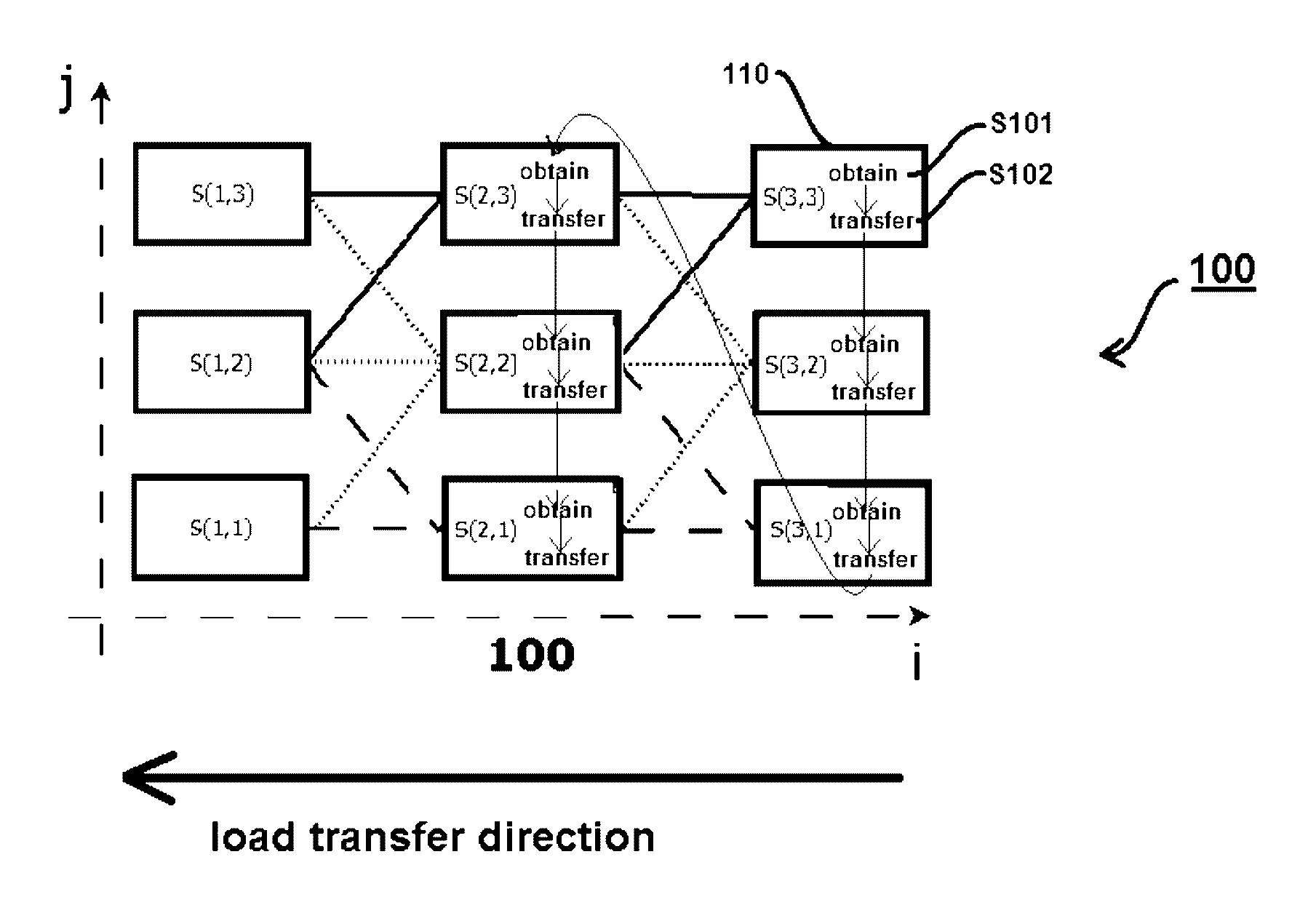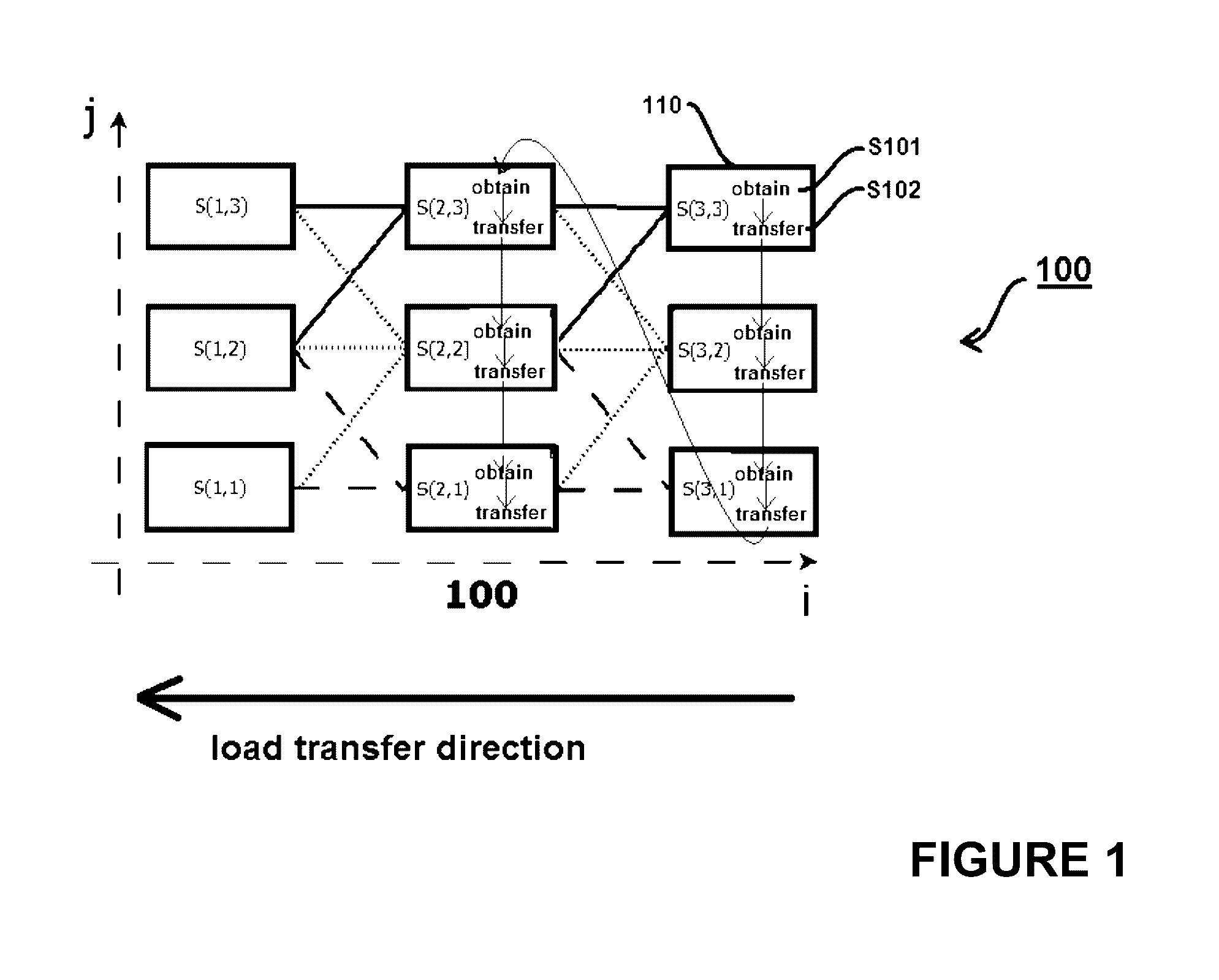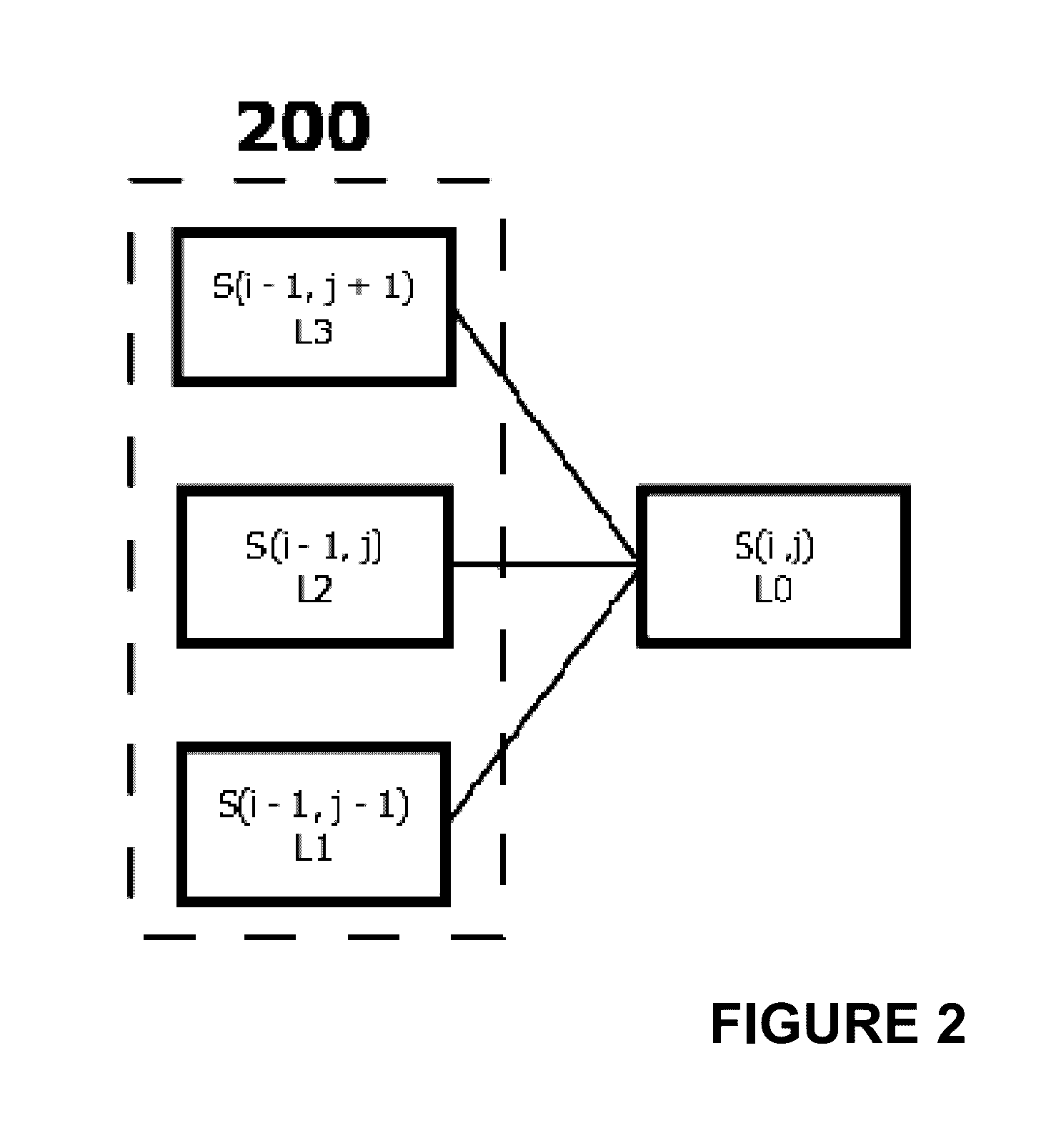Computing device, method, and program for distributing computational load
a computing load and computing device technology, applied in the field of computing load distribution, can solve the problems of increasing the complexity of the algorithms executed by global/centralised controllers in order to meet energy efficiency targets, increasing energy costs, and increasing the overall energy consumption caused by computing load and associated support mechanisms, so as to reduce the overall energy consumption caused by handling computing load and the associated support mechanisms, and achieve the effect of reducing the overall energy consumption caused by computing load and the removal of more efficiently
- Summary
- Abstract
- Description
- Claims
- Application Information
AI Technical Summary
Benefits of technology
Problems solved by technology
Method used
Image
Examples
Embodiment Construction
[0064]FIG. 1 is a schematic representation of an array of designated positions 100 of a plurality of interconnected computing devices in which a method embodying the present invention is performed. The method steps S101-S102 are overlaid onto the schematic illustration of the plurality of interconnected computing devices. Each computing device 110 in the plurality of interconnected computing devices has a designated position in each dimension of a 2-dimensional array of designated positions 100.
[0065]The method steps are overlaid onto the schematic representation of the computing devices, and the arrows linking the steps indicates the steps being performed sequentially. The process of obtaining S101 and transferring S102 is performed individually and in turn by one or more computing devices per designated position in a series of designated positions in one dimension of the n-dimensions. In the particular example of FIG. 1, the series of designated positions in one dimension of the n...
PUM
 Login to View More
Login to View More Abstract
Description
Claims
Application Information
 Login to View More
Login to View More - R&D
- Intellectual Property
- Life Sciences
- Materials
- Tech Scout
- Unparalleled Data Quality
- Higher Quality Content
- 60% Fewer Hallucinations
Browse by: Latest US Patents, China's latest patents, Technical Efficacy Thesaurus, Application Domain, Technology Topic, Popular Technical Reports.
© 2025 PatSnap. All rights reserved.Legal|Privacy policy|Modern Slavery Act Transparency Statement|Sitemap|About US| Contact US: help@patsnap.com



